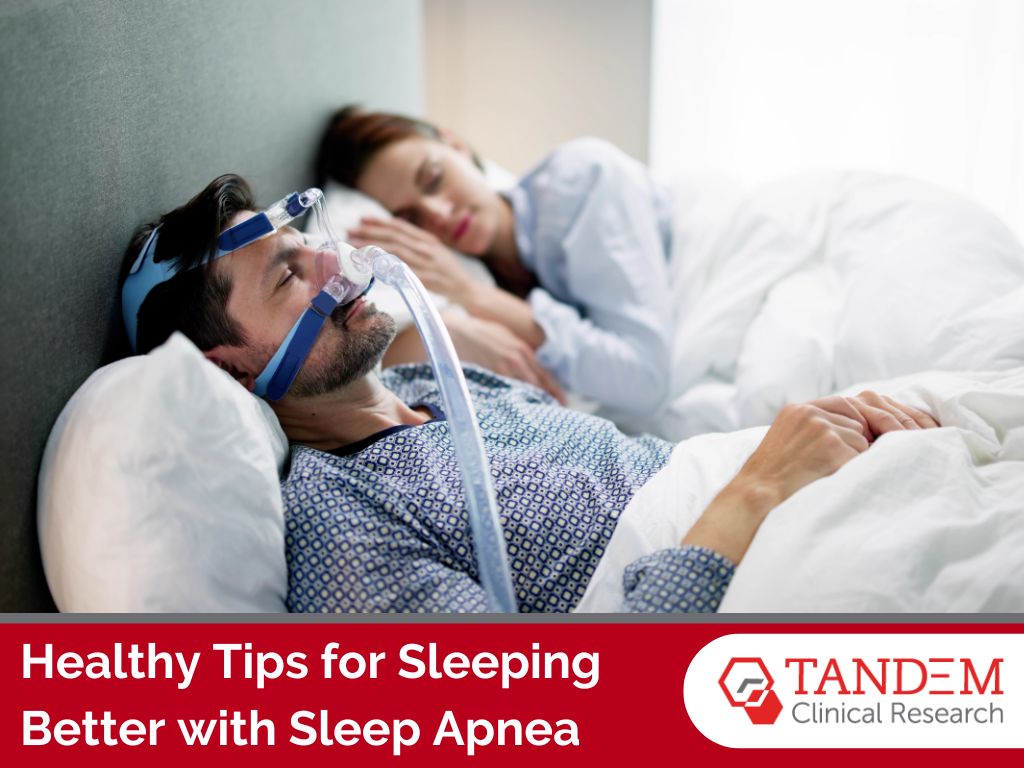
Sleep apnea is a common yet serious sleep disorder characterized by repeated interruptions in breathing during sleep. These interruptions, or apneas, can last from a few seconds to minutes and may occur 30 times or more per hour.
The most common type is obstructive sleep apnea (OSA), which affects approximately 39 million U.S. adults. OSA occurs when the throat muscles intermittently relax and block the airway during sleep. Central sleep apnea (CSA) is less common and involves the brain’s failure to send proper signals to the muscles that control breathing.
Both types disrupt sleep and can lead to various health problems if left untreated. Most commonly, people with sleep apnea tend to experience poor sleep quality, which has a massive impact on their day-to-day living.
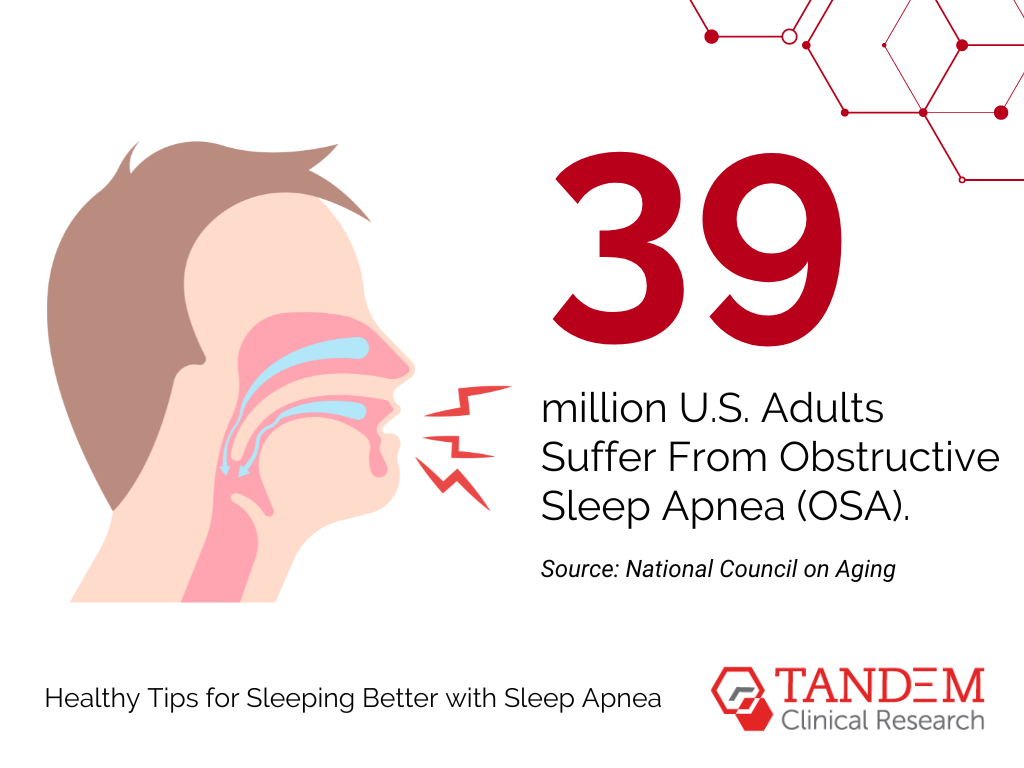
Do you struggle to get good sleep? Sick of daytime sleepiness? Here are some research-backed tips on the best way to sleep with sleep apnea.
1. Maintain a Healthy Weight
Careful weight management is crucial for those with sleep apnea, particularly obstructive sleep apnea. Excess weight, especially in the upper body, can increase the risk of airway obstruction and narrow the nasal passages.
Maintaining a recommended body weight for OSA involves many of the “standard” healthy living tips, including…

Eating a Balanced Diet
If you want to minimize the symptoms of central or obstructive sleep apnea, focus on a diet rich in fruits, vegetables, whole grains, and lean proteins. You should also avoid high-calorie, high-fat, and high-sugar foods.
In some cases, healthy plant-based diets have also been linked to a lower risk of OSA. According to a 2024 study published in ERJ Open Research, people with diets highest in plant-based food were 19% less likely to suffer from obstructive sleep apnea compared with those eating diets lowest in plant-based food. Those eating a largely vegetarian diet were also at a lower risk.
However, people eating a diet high in unhealthy plant-based foods were at a 22% higher risk compared to those eating low amounts of these foods. The bottom line is to find a nutritious, manageable diet that works for your lifestyle.
Exercising Regularly
Aim for at least 150 minutes of moderate-intensity exercise each week. According to the Sleep Foundation, regular exercise can reduce the severity of OSA, even if it doesn’t lead to significant weight loss.
Sleep apnea patients who are more active experience fewer breathing lapses during sleep, spend more time in bed, improve their cardiovascular fitness, and generally report a higher quality of life (among other benefits).
Staying Hydrated
Drink up! Recent research indicates that there may also be a connection between dehydration and obstructive sleep apnea. Some researchers propose that staying well-hydrated could potentially relieve some of the physical effects of mild sleep apnea by helping the body retain fluids and sleep more deeply.
Note: before making any dramatic lifestyle changes, we highly recommend speaking to your healthcare provider. They’ll provide specific guidance based on your health, goals, and unique needs.
2. Find the Best Sleep Position
Alongside daily healthy habits, sleep apnea patients should also pay attention to how they sleep. Your sleep position can make a huge difference in the quality and duration of sleep.
A 20-year data analysis found that around 56% of people with OSA have Position-Dependent Obstructive Sleep Apnea (POSA), meaning they typically experience airway obstruction when sleeping in certain positions.
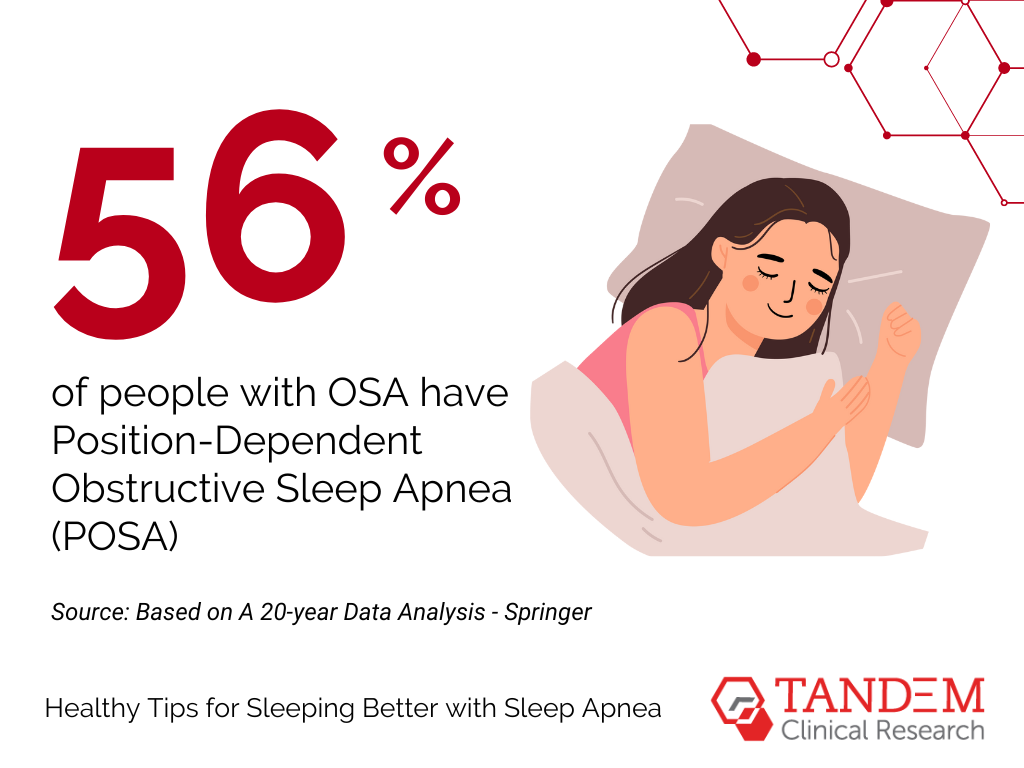
Some of the best sleep positions recommended by healthcare specialists:
Side Sleeping
Instead of sleeping on your back, try lying on your side. This can prevent the tongue and soft tissues from collapsing into the throat, reduce airway obstruction, and help reduce snoring. You can use a body pillow to keep yourself in this position.
Positional Therapy
Special sleep apnea devices, such as a wedge pillow or positional alarms, can help you stay off your back. These devices encourage better sleeping positions by making back sleeping uncomfortable or by alerting you when you roll onto your back.
Head Elevation
Many people with sleep apnea need to keep their heads high – literally. Elevating the head of your bed by 4 to 6 inches or using a specially designed pillow can help keep airways open by reducing the pressure on your throat.
If you have sleep apnea, you may need to experiment with different arrangements to find your favorite sleeping position for a good night’s rest.
3. Use a CPAP Machine
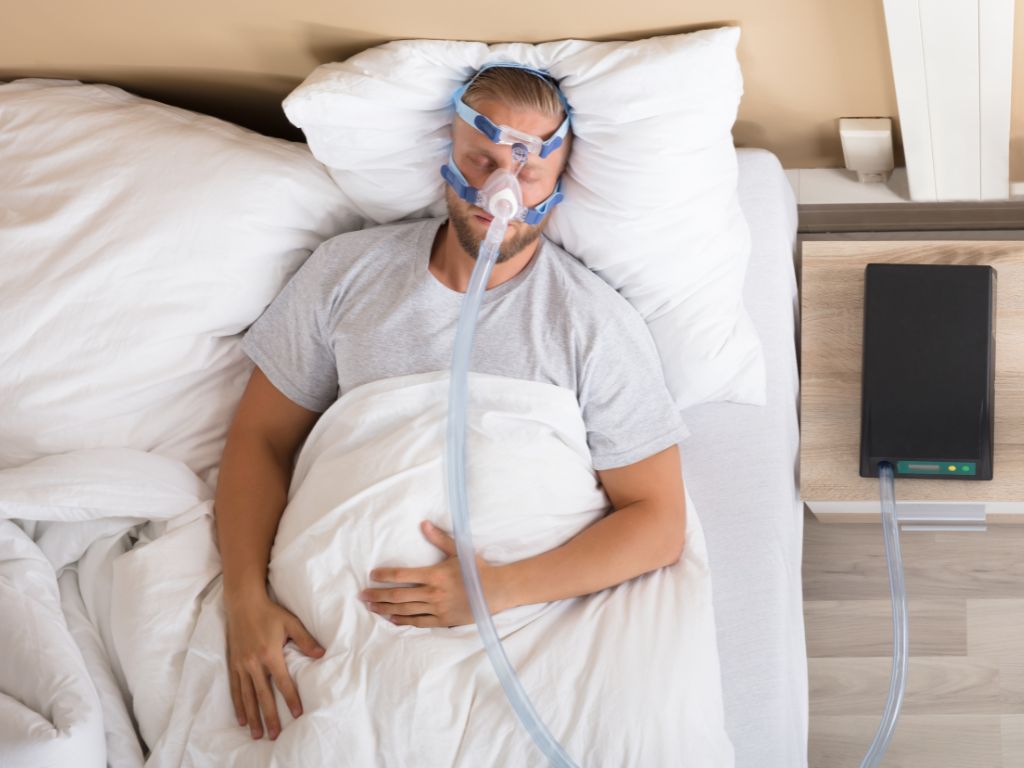
Continuous Positive Airway Pressure (CPAP) machines are a standard treatment for sleep apnea. They keep your airway open by providing a constant air stream through a mask.
As of 2024, it’s estimated that about 33 million U.S. adults use CPAP machines, making these devices relatively common. You may find that sleeping with a CPAP can significantly improve your sleep routine, leading to overall health and wellness benefits.
If you’re considering using a CPAP for severe or mild sleep apnea, pay attention to:
Proper Fitting
Ensure that your mask fits well to prevent air leaks in various sleep positions. There are different types of masks (nasal, full face, nasal pillows), so work with your healthcare provider to find the best way to sleep with sleep apnea.
Regular Cleaning
Clean your mask, tubing, and CPAP machine regularly to prevent infections and ensure optimal performance. Frequent care will also help your CPAP machine last longer, giving you more nights of solid rest in the future.
Humidification
If you tend to experience dryness or irritation in your nose or throat while sleeping, use a CPAP machine with a humidifier. This can add moisture to the air and improve comfort.
Comfort Settings
Many CPAP machines come with ramp features that gradually increase air pressure, making it easier to fall asleep. We recommend experimenting with the different settings to find the best way to sleep with sleep apnea.
4. Create a Sleep-Friendly Environment
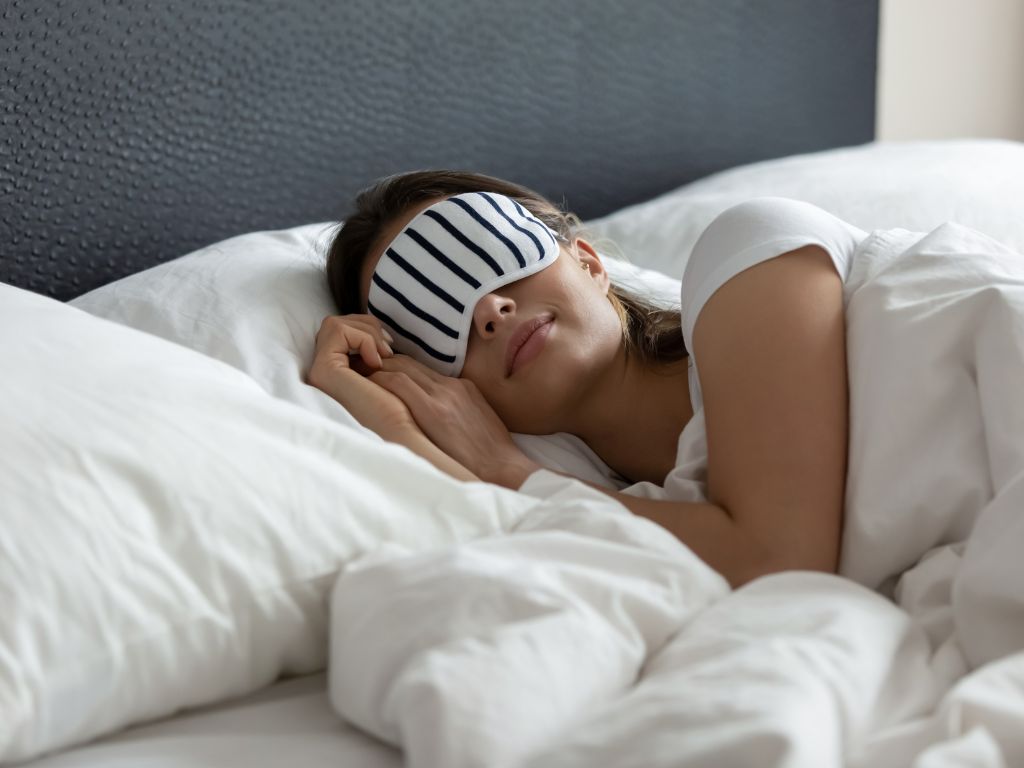
Even if you use a CPAP machine for your sleep apnea, your environment plays a vital role in the quality of your sleep. Consider the following steps to optimize your bedroom for deeper, more rejuvenating sleep:
Temperature Control
The Sleep Foundation states that the ideal temperature for sleep is between 65 and 68 degrees Fahrenheit. Sleeping at the right temperature helps your body regulate itself, making falling and staying asleep easier.
Light Reduction
Sleeping in complete darkness can have many benefits, including helping your circadian rhythm, melatonin production, and overall health. Consider using blackout curtains to eliminate outside light and wear a sleep mask if necessary.
Noise Management
Noise significantly affects sleep quality. Exposure to excessive noise during the night can disrupt your rest, causing immediate disturbances that impact the following day. If your room isn’t quiet enough, you may want to use earplugs or a white noise machine.
Comfortable Bedding
Lastly, invest in a comfortable mattress and pillows, both of which can significantly influence your sleep quality—especially if you have severe sleep apnea. Too-soft mattresses can cause your body to sink in, making your airway more likely to collapse during sleep and causing or exacerbating sleep apnea symptoms.
Ultimately, your bedroom or sleeping area should be conducive to solid rest. This is important for everyone but especially critical to people who regularly struggle with sleep apnea symptoms.
5. Establish a Sleep Schedule
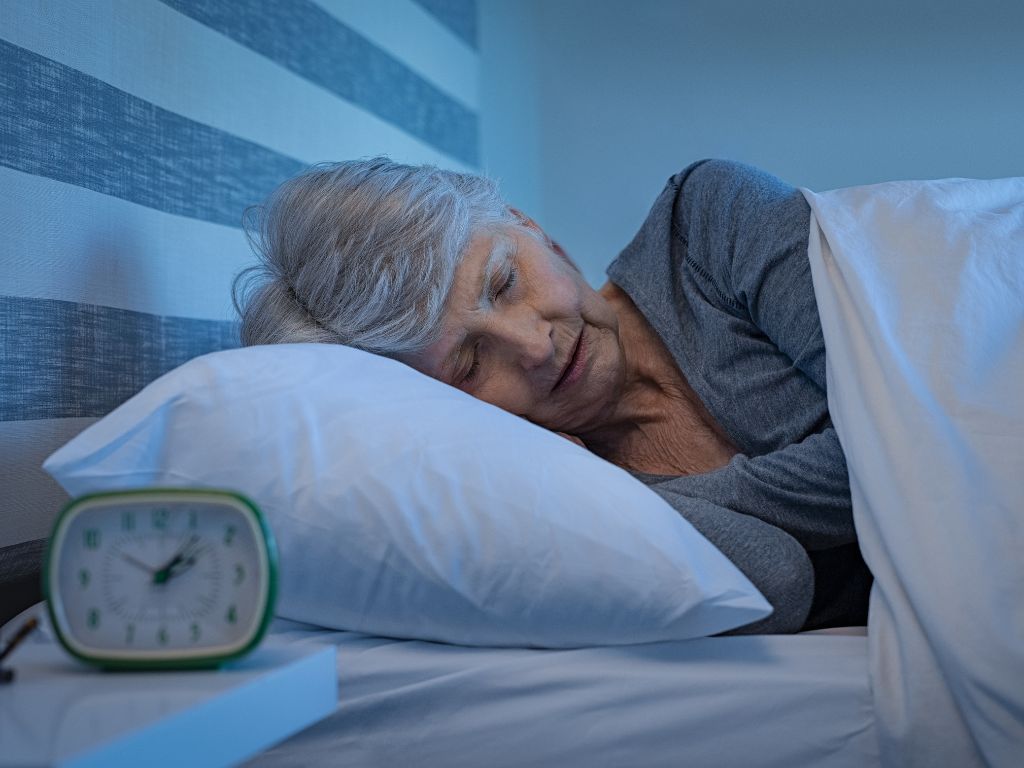
A consistent sleep schedule can significantly improve the quality of your sleep, even if you still experience multiple breathing events per hour. Here are some tips to help you establish and maintain a regular sleep routine:
- Go to bed and wake up at the same time every day, even on weekends to regulate your internal clock.
- Develop a relaxing pre-sleep routine to signal to your body that it’s time to wind down. This can include activities like reading, taking a warm bath, or practicing relaxation exercises.
- If you need to nap, keep it short (20-30 minutes) and avoid napping late in the afternoon, as it can interfere with nighttime sleep.
Remember: consistency is key. It may take time for your schedule to set in, but once it does, you’ll likely experience more rest and better-quality sleep.
6. Avoid Alcohol and Smoking
Both alcohol and smoking can worsen sleep apnea symptoms, so if you’re trying to catch more zzz’s every night, steer clear.
Alcohol relaxes the muscles in your throat, increasing the likelihood of airway obstruction. In fact, heavy drinkers have a 25% higher risk of dealing with sleep apnea than non-drinkers.
Similarly, smoking irritates the airways and can lead to inflammation and fluid retention in the upper airway. According to the Wisconsin Sleep Cohort Study, people who currently smoked had a 340% greater chance of developing sleep apnea than nonsmokers.
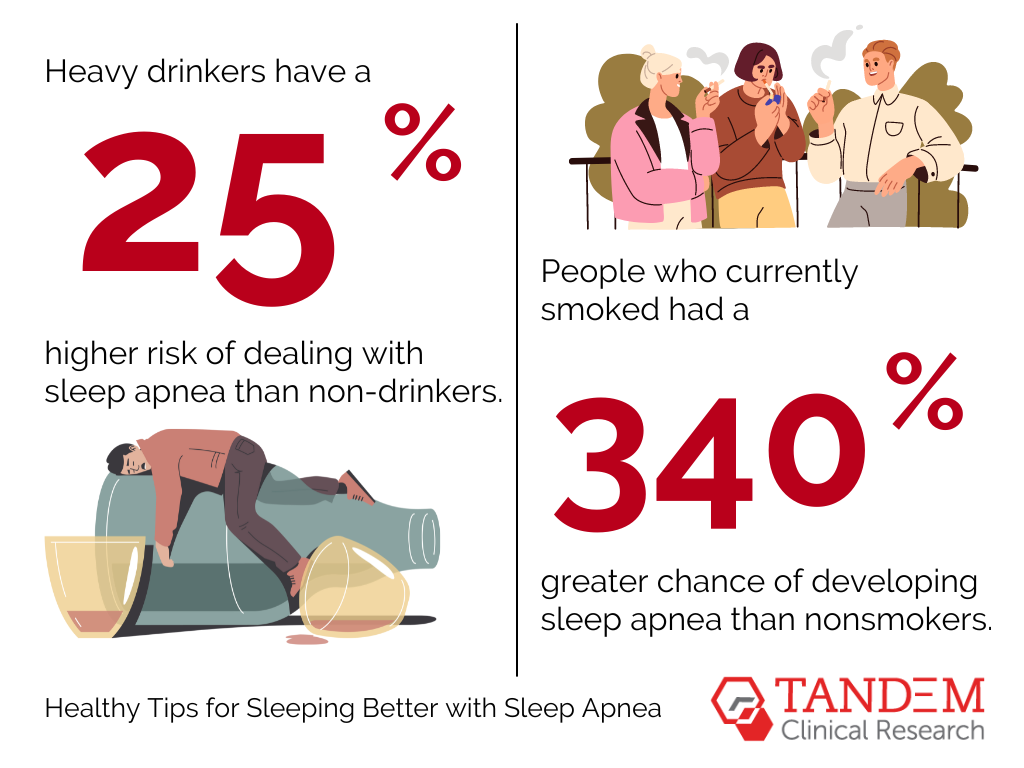
Unsurprisingly, quitting smoking can significantly benefit your sleep and overall health.
7. Practice Better Sleep Hygiene
We often think about hygiene in relation to things while we’re awake, but sleep hygiene matters, too. This refers to the healthy habits, behaviors, and environmental factors that can help you get a good night’s sleep.

For example, most healthcare providers will recommend that OSA patients…
Limit Caffeine and Heavy Meals
Avoid caffeine and large meals, especially close to bedtime. Caffeine can stay in your system for several hours, and heavy meals can cause discomfort and indigestion, exacerbating your sleep problems.
Practice Relaxation Techniques
Engage in relaxing activities before bed, such as reading, listening to soothing music, or practicing mindfulness and meditation. Deep breathing exercises can also help calm your mind so you fall asleep quickly.
Minimize Screen Time
Although putting your phone in another room won’t necessarily treat sleep apnea, it could help. The blue light emitted by screens can interfere with your body’s production of melatonin. Try to avoid most screens (TV, phone, computer) for at least an hour before bedtime. Use blue light filters if necessary.
8. Consider an Oral Appliance
Oral appliances can be an effective treatment for mild to moderate sleep apnea. These devices include mandibular advancement devices (MADs) and tongue-retaining devices (TRDs). MADs move the lower jaw forward, while TRDs hold the tongue in place to keep the airway open.
These appliances are particularly beneficial for millions of sleep apnea patients who cannot or prefer not to use CPAP machines. Although oral appliances are typically not as effective as CPAP treatment, according to the Cleveland Clinic, they can still help minimize some symptoms of sleep apnea.
If you’re interested in trying an oral appliance for sleep disorders, work with a dentist or orthodontist to ensure the device fits correctly and is adjusted for maximum effectiveness. You’ll also need to attend regular check-ups to ensure the appliance continues to fit well and do its job.
9. Consult with Healthcare Professionals
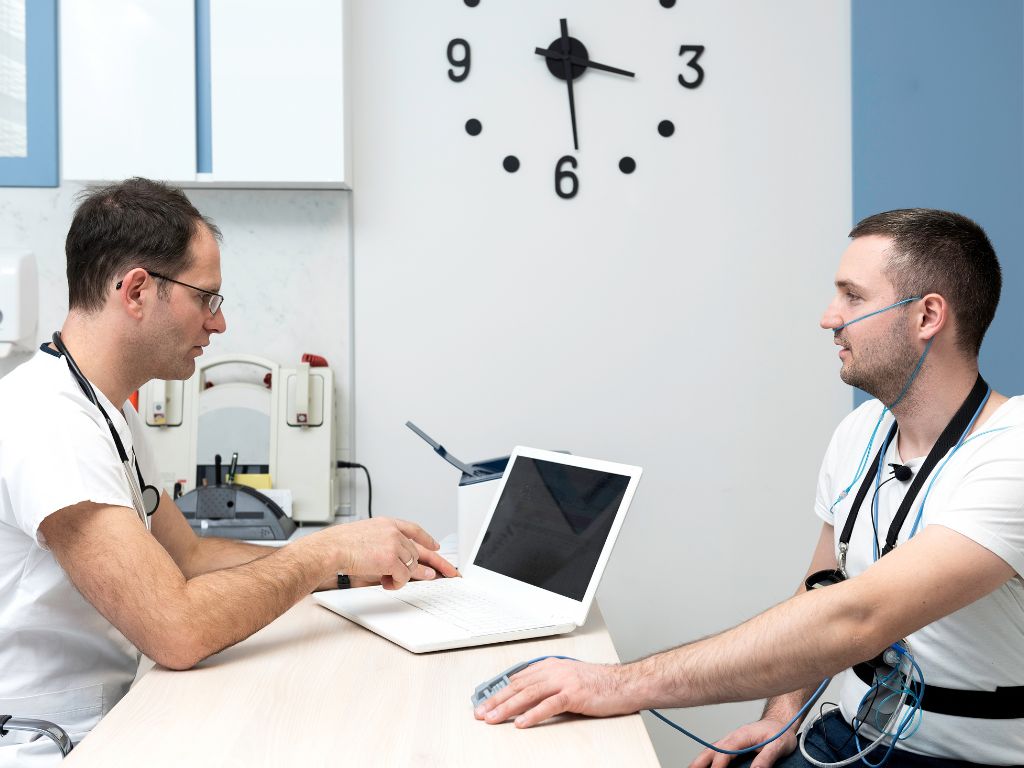
Last but certainly not least, you should always seek help from a professional. Your healthcare provider may recommend a sleep study to monitor your sleep patterns and identify specific apneas, which in turn allows them to prescribe more tailored treatments.
If you suffer from severe sleep apnea, it may also be worth getting a referral to a sleep specialist who can offer more targeted solutions to your nightly challenges.
In Summary
Sleep apnea can cause many health complications while impacting your overall quality of life, mental health, and wellness. If you’re constantly tired due to poor sleep, don’t give up: there are many paths you can take to prevent sleep apnea symptoms and improve your nightly routine.
Join Our Clinical Trials for Sleep Apnea
At Tandem Clinical Research, we are committed to advancing the science of medicine while improving the quality of life for our patients. Our clinical trials for sleep apnea are designed to explore new treatments and improve existing therapies.
By participating in our clinical trials in Louisiana you can access cutting-edge methods of treating sleep apnea. You’ll also contribute to vital research that may help others with sleep apnea.
In some cases, you may even receive access to revolutionary new sleep treatments before they hit the general market under the safe supervision of medical professionals.
To learn more about our clinical trials for obstructive sleep apnea, get in touch. Together, we can make a difference in the fight against sleep apnea and other sleep disorders.
